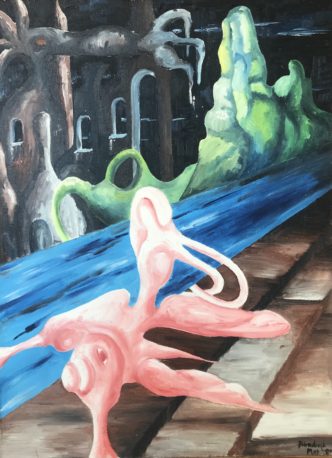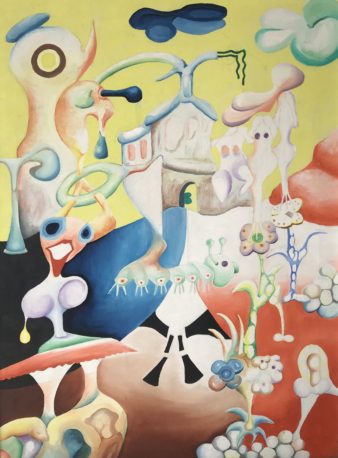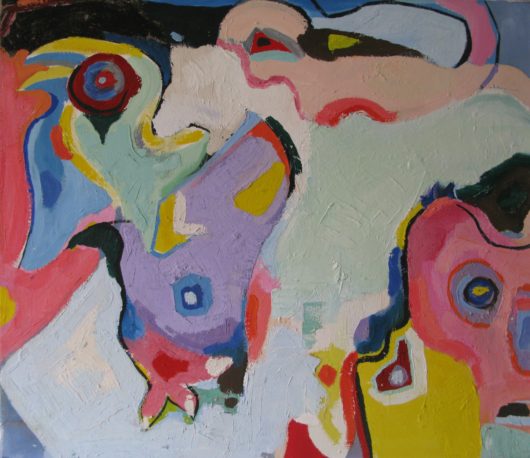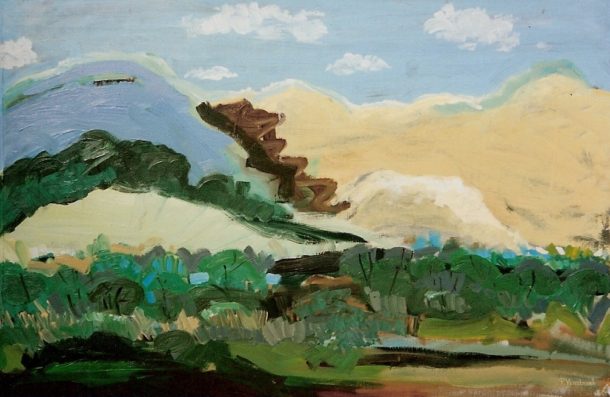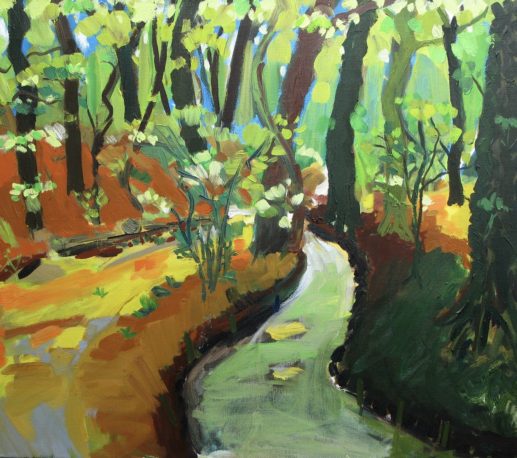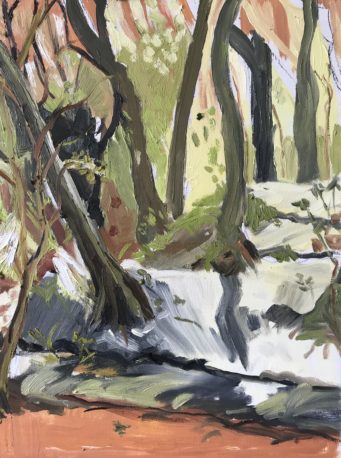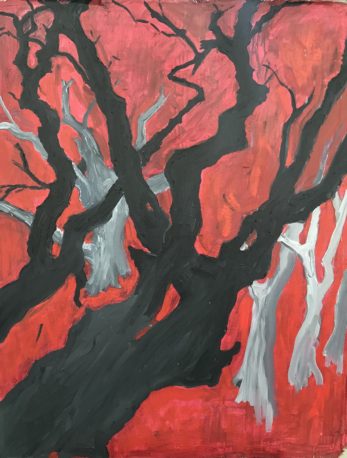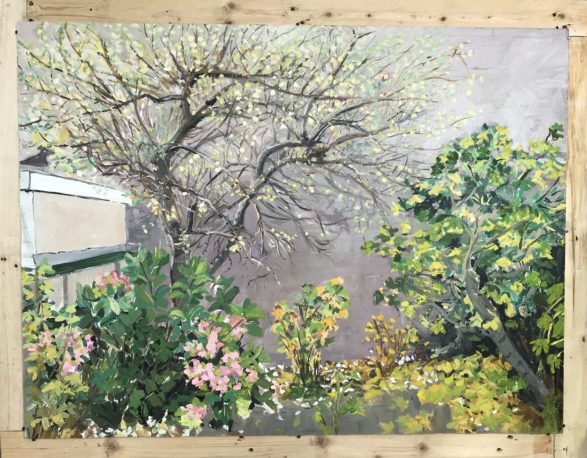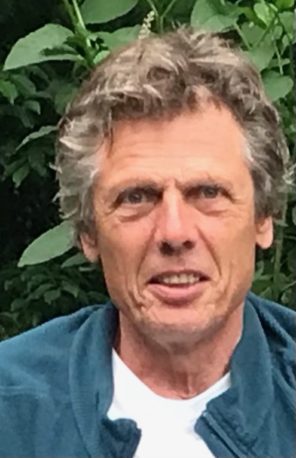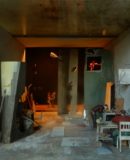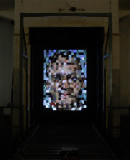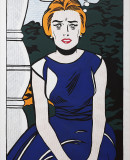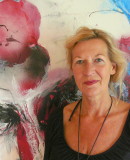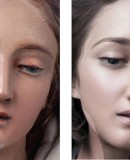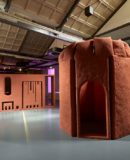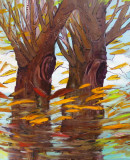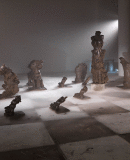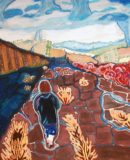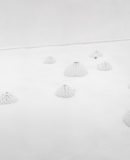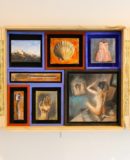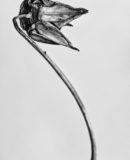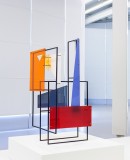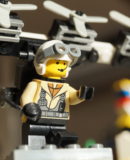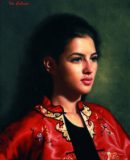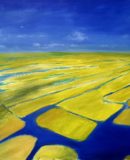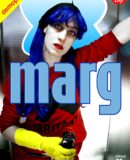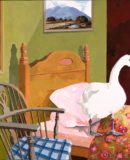World Fine Art Professionals and their Key-Pieces, 425 - Paul Versteegh
World Fine Art Professionals and their Key-Pieces, 425 – Paul Versteegh
Paul Versteegh lives and works not far from the dunes in The Hague. He has drawn and painted a number of beautiful dune views and also made collages. I spoke to Paul at an exhibition in the Family Church on the Kamperfoeliestraat, where he was painting together with Fred van der Gon Netscher.
Five Scottish Highland Cows
It is quiet and peaceful in the dunes. Once, when he was drawing not so far from beach pavilion De Kwartel, five Scottish Highland Cows approached him – a meter away. One walked on and stood behind him with his big horns. The animals looked at him and Paul wondered “how long will it last?” After five minutes they went further, as if they wanted to show: “what are you doing here?” Curious about that strange creature in their landscape.
The Veluwe
Colour, nature and sport are central to his work. Born in The Hague, he went to Ede on the Veluwe for his education as a hospital nurse. When he got home after a day education the first thing he did was grab a piece of paper and start drawing. At that time he had no skill to draw from nature and he made more or less magical realistic drawings to music by the Stones.
Due to the late shifts, he was free at non-standard times and was able to continue working on his drawings.
The first painting he made was a kind of abstract figure in time, painted to music by Pink Floyd. The second, an improvisation à la Kandinsky with music by Janis Joplin and Van Morrison. In the third painting, he depicted himself, as an artist-to-be, waiting for “something” at a bus stop. In those years he also read Waiting for Godot by Samuel Becket and L’étranger by Albert Camus. What stuck with him most of all: “And….. the present-day man seems to have lost his ‘Resignation’.”
To the Academy
Back in The Hague he went to the Free Academy. He wanted to learn the techniques to draw and paint from nature. He did portrait and model drawing, he also ventured into drawing an unfolded umbrella and a horse skull. With that work he was then accepted for the five-year evening course of the Royal Academy. Although: a drawing, still made in Ede, turned out to be the deciding factor. After his graduation from the Royal Academy he went back to the Free Academy.
At both academies, the teachers walked around to give directions or tips, but in the end it had to come from yourself. “You had to discover yourself.”
Artists he has been particularly interested in over the years
In high school, it was the Cobra movement, especially Karel Appel. In Ede, it was the Verkerke posters of the zodiac by Johfra. At that time, in the mid-1970s, he also heard about Rien Poortvliet, but it did not really come within his field of vision. He also read about studying and influencing growth processes by Sjoerd Buisman. Back in The Hague, after the Royal Academy, it was Pieter Ouborg whose paintings made a big impression and Miro.
And Van Gogh, after a visit to a major retrospective in the 1990s.
Color
A follow-up to this was the discovery of the color theory – through a colleague – in 2007. The color theory of Itten-Goethe-Steiner and Newton. Itten (1888-1967), was a Swiss painter, who treated the color theory at the Bauhaus. Goethe (1749-1832), also wrote a book on color theory and Steiner also wrote on the topic (1861-1925).
Steiner found Goethe authentic, while he detested Newton (1643-1727), who had also dealt with the subject from a physics perspective with attention to color splitting, radiation and wavelengths. Steiner approached the theme of color from the cosmos and saw the origin of colorful life on earth in connection with this. He was the founder of the anthroposophical movement. And of course Kandinsky and his “the spirituality in art”!
How did the drawings and paintings of the dunes come about?
Back in The Hague, he went running at ‘Hague (Haag) athletics association’ to train for the CPC (City-Pier-City run). To regain his feeling for nature, he started sketching and drawing in the dunes with the first principles he had acquired at the Free Academy. After the Royal Academy he also made paintings in the dunes in acrylic paint, where he had to be careful in hot weather that the paint did not dry up on his palette beforehand.
Nowadays he also makes paintings in oil paint. Recently he became interested in the climate and its changes. He depicted the consequences of this in works with broken branches, grass growth and quickly discoloring leaves.
What is his experience of art life?
Painting is by nature a solitary activity, which does not go well with his character, he says. “But with the exhibitions and fairs, I come into contact with a lot of people.
During my education and especially at the Free Academy there were many contacts, especially during a period when I painted in a group with elderly people who had already completed their working lives.”
A very special contact is that with his partner Thea Bonnecroy. She made the transition from the financial world of the bank to art. She did this through a sculpture course and has been an independent artist for years now with her own sculpture studio. Her modern sculptures can be seen on her site: ‘Steenslag94’, Atelier: Pastoorswarande 58.
Last but not least: “besides the euphoria and desolate moments, there is always inspiration through exhibitions and books about artists’ lives and our friends from the art world.”
Images
1) Searching, 1974, Oil on panel, 90 x 70, 2) Searching again, 1974, Pen drawing on paper, 40 x 30, 3) Improvisation, 1975, Oil on canvas, 90 x 70, 4) Freedom, 1989, Oil on canvas, 70 x 100, 5) Hague dune, 2008, Oil on canvas, 70 x 120, 6) Meer en Bos, 2008, Oil on canvas, 50 x 70, 7) Meer en Bos , 2019, Oil on panel, 70 x 50, 8) Forest memory, 2022, Oil on cardboard, 84 x 65, 9) Garden atelier, Oil on board, 80 x 100, 10) Portrait photo of Paul Versteegh
https://www.paulversteegh.nl/https://ifthenisnow.eu/nl/verhalen/de-wereld-van-de-haagse-kunstenaar-126-paul-versteegh
Disclaimer: The views, opinions and positions expressed within this guest article are those of the author Walter van Teeffelen alone and do not represent those of the Marbella Marbella website. The accuracy, completeness and validity of any statements made within this article are not guaranteed. We accept no liability for any errors, omissions or representations. The copyright of this content belongs to Walter van Teeffelen and any liability with regards to infringement of intellectual property rights remains with the author.

